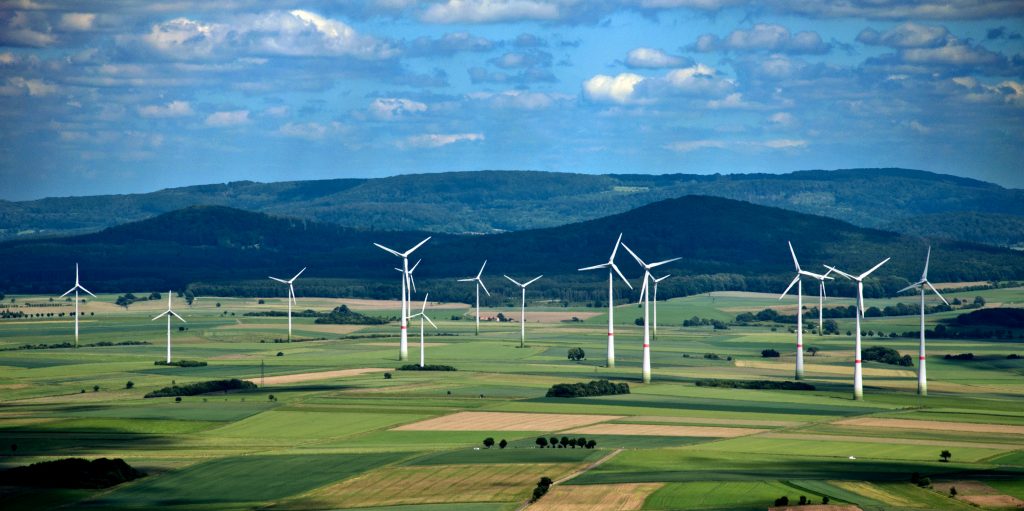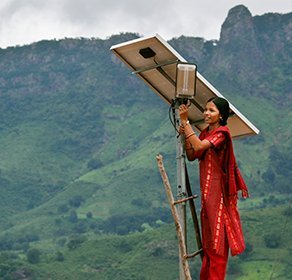As technologies advance, costs fall, and policy support and public acceptance grow, the rapid commercial growth of renewable energy continues to be one of the biggest stories in global energy. As countries continue to transition to a low carbon future in the early years of Paris implementation, evidence suggests that the outlook for renewables’ growth is bright.
Expected to account for nearly all of the growth in primary energy demand, China, India, and other developing countries are critical to the transition. However, developments in the United States and Europe will also be significant and help pave the way for further efficiency improvements and driving reduction in the costs of these technologies.
Three recent reports outline the trajectory of renewable energy growth in Europe and the United States and the outlook for the global development of renewables: (1) Agora Energiewende’s The European Power Sector in 2017; (2) Bloomberg New Energy Finance/Business Council for Sustainable Energy’s 2018 Sustainable Energy in America Factbook; and (3) British Petroleum’s BP Energy Outlook, 2018 edition. The following presents some of the exciting conclusions from these reports.
The European Union (EU) has set an ambitious binding target of 27 percent renewables, including hydropower, of final energy consumption in 2030, and may even ratchet up its ambitions. In 2018, EU member states, the European Commission, and the European Parliament will debate setting a more aggressive 2030 target of 30 to 35 percent. The EU appears on track to meet its 2020 target of 20 percent renewables as renewable generation rose to 30 percent of total electricity generation in 2017, according to Agora Energiewende. Significantly, total EU wind, solar, and biomass generation exceeded coal and lignite generation for the first time in 2017.
Meeting the 2030 overall 27 percent target will require renewables to increase their share to about 50 percent of power output. Given fairly steady past growth of renewables at around 1.7 percent annually since 2010, a February 2018 study by the International Renewable Energy Agency for the European Commission projected that achieving the target would be possible if renewables were doubled to 327 gigawatts (GW) in 2030. Although European renewables development has traditionally been dominated by solar deployment, notably in Germany and Spain, wind has now overtaken solar and renewables have become more geographically concentrated within the EU due to large wind installations in Germany and the UK, including significant development of offshore capacity. Wind capacity additions in the European Union totaled 14 GW in 2017 and wind generation grew by 58 terawatt hours (TWh); solar capacity increased by 9 GW but generation from solar increased by only 5 TWh.
However, despite renewables growth and the continued fall in coal and lignite output, carbon emissions in the EU power sector were roughly flat due to lower hydro availability and reduced nuclear power output in France and Germany.
Turning to the United States, the Sustainable Energy Factbook reports that lower capital expenditure costs and continued investment and production tax credits for wind and solar contributed to the second highest level of renewable additions on record—18.4 GW or 62 percent of new US power installations. Renewable additions even surpassed new gas capacity in 2017. Bloomberg New Energy Finance estimates that renewable energy generation grew by 14 percent in 2017 and jumped from 15 to 18 percent of total power generation, with restored West Coast hydro playing a key role.
Despite the Trump Administration’s relaxation of some coal regulations and unsuccessful efforts to secure tariff relief from the Federal Energy Regulatory Commission (FERC) for coal’s reliability as a source of baseload power, coal generation declined. Notably, the continued closing of coal plants and increased use of gas and renewables in the US energy portfolio reduced estimated US carbon emissions in 2017 to their lowest level since 1991, with emissions in the power sector declining an estimated 4.6 percent. Thus, the Obama Administration’s goal under the Clean Power Plan of reducing emissions in 2030 by 32 percent compared with 2005 could be achieved if strong state and local action continues, especially if efficiency improvements continue to reduce electricity demand as they did in 2017, with electricity consumption falling 2.6 percent despite stronger economic growth.
The proliferation of renewables is supported by the conclusion in both reports that the technologies are becoming more cost competitive, with examples of wind and solar contracts below $40 per MWh and in some US cases below $20 per MWh. The experience in both the United States and Europe clearly shows that at both a local and national level, electricity systems with 30 percent renewables are being successfully operated and that much higher levels are possible, as Denmark demonstrated in 2017 with its 74 percent renewables generation average. Building new transmission capacity and modern grid systems to integrate increasing variable renewable generation is critical and faces constraints in some European and United States regions.
Looking at this experience, as well as other factors, it is no surprise that BP’s Energy Transition Scenario concludes that renewable growth looking to 2040 will be robust, at 7 percent annually. As the global economy becomes increasingly electric—70 percent of future primary energy growth is projected to be in the power sector—renewables could represent more than 50 percent of future electricity and contribute to a change in the world’s primary energy mix to equal shares of 25 percent for renewables, coal, gas, and oil in 2040.
Although BP concludes that Europe, the United States and other OECD countries will be important drivers in the growth of renewables, developing and emerging countries, especially China, which added 52 GW of solar alone in 2017, and India, which together with China are expected to account for 50 percent of global energy growth to 2040, will play a central role in the transformation. China’s transformation is anticipated to be very rapid, with coal consumption peaking in the near-term and renewables, nuclear, and hydropower accounting for 80 percent of the increase in their energy demand out to 2040. In India, renewables will grow rapidly, but BP projects that coal consumption will continue to increase and meet 45 percent of the future energy demand.
Thus, the fuel mix choices and investments these countries, as well as those of the other Asia coal consumers (e.g. Indonesia, Vietnam), make will be decisive in achieving the needed acceleration in the decarbonization process.
Dr. Robert F. Ichord is a senior fellow with the Atlantic Council Global Energy Center.
Related content
Image: A windfarm in Hesse, Germany (Angela Rohde/Shutterstock)

